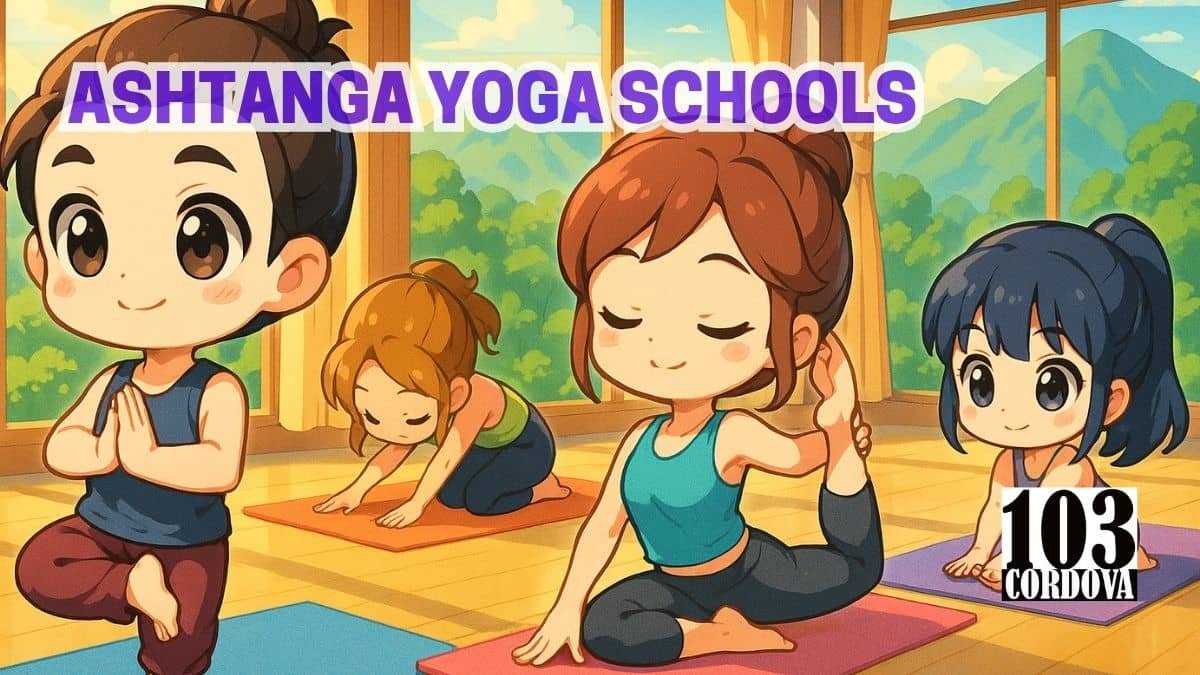Ashtanga yoga schools are known for offering strong and well-planned teacher training programs.
These programs are not only for learning how to teach but also for deepening personal practice.
They usually follow a set structure with clear goals and daily routines.
Each part of the training supports the student’s growth in both movement and understanding.
We’ll explain how these schools build and deliver their training programs.
1. Prerequisites Emphasizing Consistent Personal Ashtanga Practice
Before joining a teacher training program, students are often asked to follow a regular Ashtanga practice.
Most schools want to see at least six months of steady practice of the Primary Series.
This shows that the student is familiar with the sequence and has discipline.
Without this foundation, it can be hard to keep up with the demands of the training.
Being prepared physically and mentally helps students benefit more from the program.
2. Balanced Curriculum Of Yoga Theory And Practical Asana Practice
The training program includes both physical practice and yoga philosophy.
Mornings are usually spent doing the Ashtanga sequence with guidance from teachers.
Later in the day, students study yoga texts, ethics, and breathing techniques.
This way, students understand not just how to move, but also why the practice matters.
The mix of physical and mental work creates a fuller learning experience.
🧘 How Does Chair Yoga Certification Prepare You to Teach Inclusive Yoga Classes?
3. Step-By-Step Mastery Of The Primary Series And Advanced Sequences
Trainees are taught the Primary Series one posture at a time.
Teachers explain how to enter and exit each pose safely and with control.
Over time, students also learn more advanced postures if they’re ready.
This step-by-step method builds strength, memory, and focus.
It also allows students to grow without feeling rushed or overwhelmed.
🧘 How Yoga Incense Enhances Focus and Concentration During Practice
4. Integration Of Patanjali’s Eight Limbs Of Yoga Philosophy
Part of the training includes learning the Eight Limbs of Yoga, which guide how to live and practice.
These include basic values like honesty, self-discipline, and focus.
Students read and talk about these ideas to see how they relate to real life.
The Eight Limbs give meaning to the physical poses by adding a deeper purpose.
This makes the training more than just exercise.
🧘 How Does Vinyasa Krama Yoga Enhance Mind-Body Connection and Mindfulness?
5. Focused Study On Anatomy, Alignment, And Injury Prevention
Learning about the body helps students teach safely.
The training covers muscles, joints, and how the body moves during yoga.
Students also learn how to adjust postures to fit different people.
This helps prevent injury and builds trust between teacher and student.
Knowing how the body works is a key part of becoming a good yoga teacher.
🧘 How Yoga Alignment Enhances Your Posture and Overall Well-Being
6. Teaching Skills Development With Practicum And Feedback Sessions
During training, students get to practice teaching in front of others.
They might lead small sections of a class or give short lessons.
Teachers and classmates give feedback on voice, timing, and clarity.
This helps build confidence and improve teaching skills over time.
Real teaching experience during training prepares students for leading classes after graduation.
🧘 Why You Should Practice Pranayama Poses with Proper Guidance and Technique
7. Blend Of Traditional Mysore-Style And Modern Yoga Adaptations
Mysore-style practice is a quiet, self-paced way to do the Ashtanga series with teacher support.
Many schools use this method in training so students can memorize and grow in the practice.
Some schools also include videos, group work, or modern tools to explain things better.
This blend of old and new makes the program useful for many kinds of learners.
It respects tradition while making space for modern learning styles.
🧘 How Yoga Hotspots Around the World Are Transforming Wellness Tourism
8. Intensive Daily Practice With Varied Program Durations
Teacher training is usually full-time and includes a lot of daily practice.
A typical day starts early with physical practice, followed by theory, group work, or teaching practice.
Programs can last 3 to 12 weeks, depending on the school.
Some offer longer, part-time programs for people with other commitments.
No matter the length, the training is meant to be focused and steady.
🧘 Why Eco-Friendly Yoga Products Are Taking Over the Market
9. Yoga Alliance Certification And Global Teaching Recognition
Many ashtanga yoga schools follow standards set by Yoga Alliance, a global group for yoga teachers.
If the school is approved, graduates get a certificate that is recognized in many countries.
This makes it easier to get teaching jobs or open classes anywhere.
Certification also shows that the teacher has met certain learning and practice goals.
It gives students a sense of achievement and readiness to teach.
🧘 Master the Basics and Beyond of Yoga
10. Ongoing Mentorship And Community Support After Training
Training doesn’t stop at graduation.
Many schools keep in touch with students through online check-ins, workshops, or private coaching.
Some offer mentoring from experienced teachers who help new instructors grow.
Being part of a yoga community helps teachers feel supported and stay connected.
This support system can be helpful during the first few years of teaching.
🧘 Wellness-Focused Yoga Studio in Marikina
💡 Conclusion
Ashtanga yoga schools build their teacher training with care and structure.
Each part of the program is made to help students grow in practice, teaching, and understanding.
The focus on tradition, along with useful updates, creates a strong and balanced experience.
Students leave with real skills, both on the mat and in the classroom.
This thoughtful design makes the training programs stand out.
🧘 Our Services
Join our yoga classes at 103 Cordova Activity Space, open to all ages and skill levels.
We’re located at 103 Cordova Tower, Marquinton Residences, Cirma Street, Sto. Niño, Marikina City.
Our classes help you build strength, improve focus, and feel more relaxed.
For more details, message us on Facebook or use the contact form on our website.
You can also call us at 0917 622 5780 to get started today.

